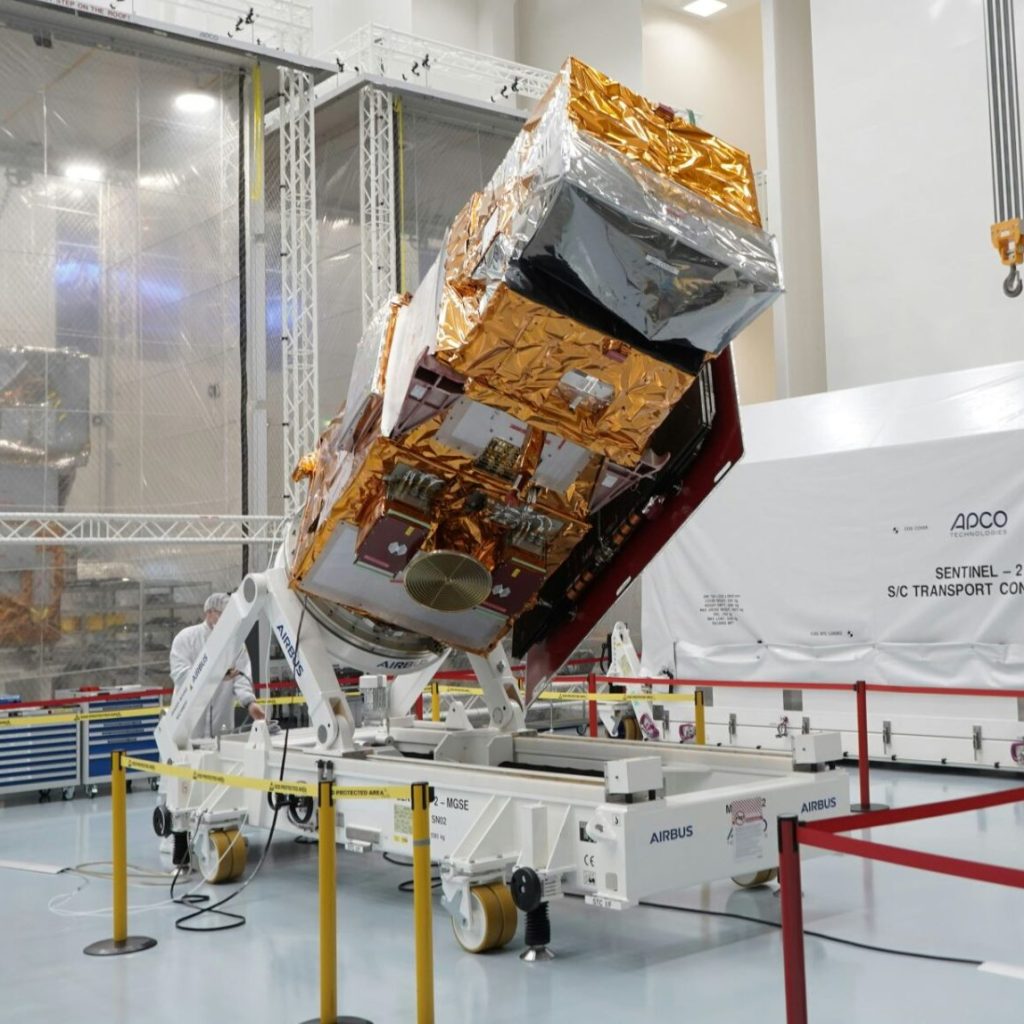Airbus has commenced the journey of the Sentinel-2C satellite, the third in the Copernicus Sentinel-2 series, from its production site in Friedrichshafen to Bremen on July 2, before embarking on a maritime voyage to the European spaceport in French Guiana.
The satellite container was loaded onto Canopée, a sail-assisted cargo ship designed for transporting Ariane 6 rocket components to the Guiana Space Center in Kourou, where it is expected to arrive in approximately two weeks.
The Sentinel-2 mission operates with a constellation of two identical satellites, Sentinel-2A (launched in 2015) and Sentinel-2B (launched in 2017), orbiting the Earth 180° apart to optimize coverage and revisit time. With an orbit cycle of 100 minutes, the satellites provide comprehensive coverage of all land surfaces, large islands, inland and coastal waters every five days. Sentinel-2C will replace its predecessor, Sentinel-2A, upon reaching orbit, ensuring continuity of data until Sentinel-2D replaces Sentinel-2B to extend operational capability beyond 2035.
Marc Steckling, Head of Earth Observation, Science, and Exploration at Airbus, highlighted the significance of the Sentinel-2 mission: “About half of the data assessing and monitoring the impact of climate change on Earth is actually delivered by satellites. The Copernicus Sentinel-2 satellites have provided valuable climate information to scientists since 2015, and Sentinel-2C will ensure continuity.”
The Copernicus Sentinel-2 satellites play a crucial role in monitoring various aspects of Earth's environment, including land use, agriculture, forestry, natural disasters, and environmental phenomena such as pollution of lakes and coastal waters, as well as glacier and snow monitoring.
Additionally, the satellites contribute to assessing and managing the impact of climate change and have enabled the monitoring of marine litter, reflecting their broad application in supporting global environmental efforts.
